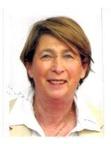Dorothea Shefer-Vanson's Blog, page 20
September 30, 2021
The Lowest Place on Earth
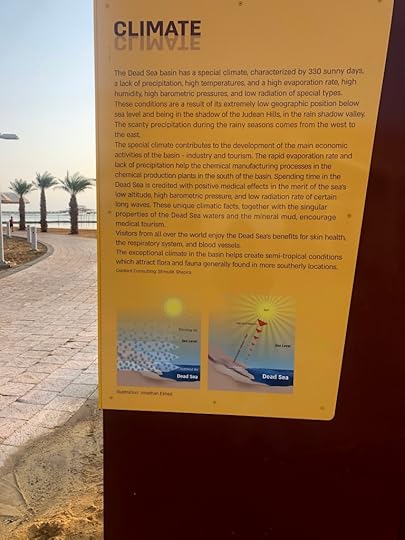 Dead Sea notice-board
Dead Sea notice-boardA birthday and a wedding anniversary (55 years!) impelled us to celebrate the double occasion with a weekend of pampering and feasting at one of the hotels situated on the shore of the Dead Sea.
Upon checking in at the hotel we were required to show proof that we had been vaccinated, and were reminded that masks were obligatory in all public areas. When we asked what the situation was with regard to children (our dates coincided with a holiday period in Israel) we were assured that they had to have still-valid negative Coronavirus tests. And the staff? All had to be vaccinated, they said.
The climate of the area around the Dead Sea is very hot, both by day and by night, and the hotel’s air-conditioning system had to work hard to maintain a pleasant temperature throughout the building. Nevertheless, some intrepid guests ventured out to bathe in the very salty water of the Dead Sea while others preferred to benefit from the hotel’s very large fresh-water swimming-pool, with its adjacent relaxation area equipped with capacious shade-beds, loungers, and even a kiosk where soft drinks and ice-cream could be bought. There is also a spa and an indoor salt-water pool, where one can enjoy the benefits of the salt water without having to leave the building.
Apart from the plentiful food that was as varied and sumptuous as anyone could desire, the other attractions provided by the region are the relative peace and quiet. We ventured out in the early morning, when the air was cooler, to explore the paths along the sea-shore that have been provided by the regional authority.
Since our last visit to the region two years ago changes have been made to the surrounding area, with new paths added and a path that used to exist covered over as construction work proceeds alongside it. Thus, the route fronted by flowering bushes and stately trees that I used to take for my solitary morning march along the main road with occasional traffic no longer exists. But a new path, going in the opposite direction, i.e. south rather than north, has been created, and this goes along the sea-shore. My OH joined me for these early-morning excursions, and was as fascinated as I was to find that at various points along it huge notice-boards have been posted containing interesting information about the region.
One of the notice-boards is headed ‘Riverbeds and Flash Floods in the Judean Desert and the Dead Sea Shore,’ and the text describes how the difference in height between the Judean Hills in the east and the Dead Sea valley creates a steep incline which causes the precipitation to be concentrated on the western slopes and prevents the rainfall from reaching the valley further east. In the rainy season the sudden accumulation of water in dry river beds (wadis) can cause flash floods which, while impressive, can be dangerous. Another notice-board, ‘The Judean Desert – a Local Rain Shadow Desert,’ explains how regions such as the Arabian and Sahara deserts are created and defined. In addition to the texts, in Hebrew and English, each notice-board bears a graphic illustration helping to make its point.
A third notice-board is headed simply ‘Climate,’ and this one decribes the features which characterise the Dead Sea region (high temperature, high evaporation rate, high barometric pressure and low radiation) due to the fact that it is situated below sea level. The notice also states that the region is characterized by high humidity, but to the best of my knowledge the opposite is the case. Be that as it may, the natural resources of the Dead Sea are used in the chemical and mineral industries, as well as providing medical benefits.
It all reminds me of my youth, when I studied for my A-level exams in Geography under the formidable Miss Jones. In those far-off days I was conversant with various aspects of physical geography and could use terms such as ‘precipition,’ ‘longitude,’ ‘latitude,’ and ‘rain shadow,’ in their correct contexts. It was a pleasant surprise to come across the new notice-boards which are informative, do not insult the reader’s intelligence and are not retricted to trite, crowd-pleasing platitudes.
So we could return from our weekend break relaxed, refreshed and furnished with new knowledge. But however hard we tried to restrain our appetites, the food was too tempting and delicious, and was very difficult to resist. Now it’s time to work on getting our natural waistlines back.
September 23, 2021
Birds of a Feather
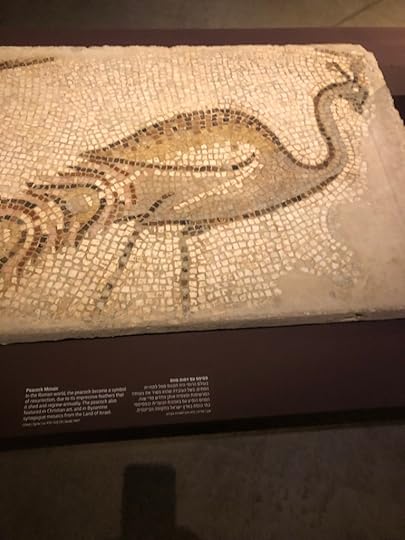
Under the title ‘Early Birds; Soaring with the Ancients,’ the Bible Lands Museum in Jerusalem has put together an exhibition of archaeological items from the Land of Israel and the Ancient Near East depicting birds of various kinds. Upon entering the exhibition area and before inspecting even one of the many items on display the visitor’s ears are assailed by the sound of bird calls, cries and song, ranging from waterfowl to the tiny colibri birds that love the brightly-coloured hibiscus flowers that abound in Israel today.
Everyone knows about the pivotal role played by the dove in the Biblical story of Noah’s ark, so it is especially intriguing to come across a tiny sculpture of a dove accompanied by a plaque explaining the mythological significance of the dove in the ancient cultures of the region. Thus, the dove was the symbol of love associated with the Mesopotamian fertility goddesses Inanna and Ishtar, and also served as a metaphor for lovers in Akkadian poetry, featuring in a similarly symbolic way in the Song of Songs. The symbol of the dove with an olive twig in its beak has in fact become a universal symbol of peace.
Both in ancient and modern kingdoms the eagle has come to represent supremacy, empire and dominance over others, and representations of this majestic and powerful bird are to be found in the tombs of the pharoahs as well as in the seals and crests of European monarchies and royal dynasties.
Another display case contains a statuette depicting the falcon god Horus, who was one of several gods in ancient Egypt shown in this way. One statuette shows Horus as a falcon, and the other as a man with a falcon head. In both the god wears the double crown, symbolizing the union of Upper and Lower Egypt.
A charming mosaic depicting a peacock was found in Syria and dates to the Roman period. The peacocks symbolized resurrection for the Romans and also featured in Christian art and Byzantine synagogue mosaics from the Land of Israel. Another entrancing mosaic, this one from the Land of Israel or Jordan, dates from the 6th or 7th century CE and shows a chukar partridge strutting out boldly.
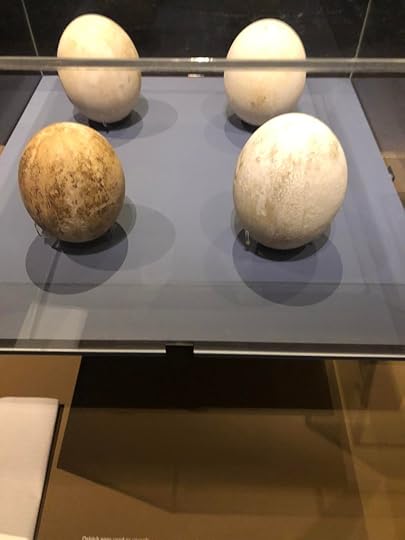
A well-lit display case contains four enormous ostrich eggs, found in the Land of Israel and dating from between 3500 and 3550 BCE. Due to their size and thick waterproof shell they were used as luxury vessels in ancient Near Eastern cultures. The oldest egg on display is around 5,500 years old.
It is encouraging to note that all the inscriptions and labels accompanying the exhibits are in Hebrew, English and Arabic, as befits a museum which was founded by archeologist and collector Dr. Eli Borowski in the belief that “the future of mankind has its roots in the past…only through understanding our history can we build a better future.”
September 17, 2021
A Boy in Winter
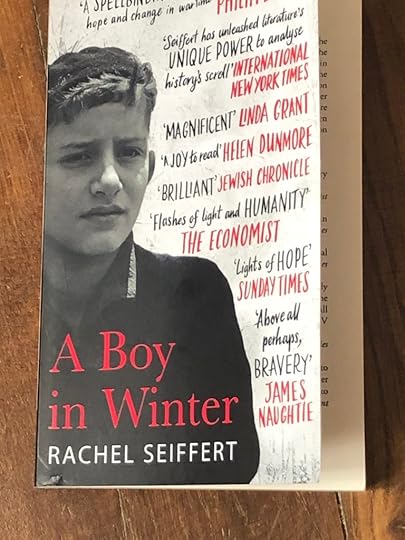
This book by Rachel Seiffert appears initially to be an first-hand account, told from the viewpoints of the various individuals involved – both directly and indirectly – in the round-up and murder of the Jews of a small Ukrainian town. The events are portrayed by means of a graphic and sometimes shocking narrative.
We first encounter two young boys, brothers, one considerably smaller than the other, hurrying past the houses of the town in the early morning. This and other sections of the book are written in the present tense, giving the reader a sense of immediacy, as if he/she is watching events unfolding in front of him/her. I personally do not like that writing convention. Although it seems to be increasingly common as an authorial stance, I still prefer the traditional literary approach, using the past tense.
After witnessing the boys’ escape from the town the reader is introduced to Pohl, the German engineer who has been sent to the region to supervise the construction of a highway through the dank, damp terrain. We first encounter Pohl’s human side as he sits in his boarding-house room and engages in a mental conversation with his wife, Dorle, as he experiences the first stirrings of anger at the way the local population is being treated by the invading German army.
The next brief scene shows us the elderly local schoolmaster caught up in the developing tragedy as soldiers shout in German, ordering all Jews to leave their homes and assemble outside. The schoolmaster and his even older mother are confused and bewildered by the insults and instructions yelled at them. They are joined by other Jews as they are all herded (the word Pohl uses to describe the scene) towards the local brickworks. They have all been told to bring warm clothing and provisions for a journey of three days, and are made to stand in an enclosed space for many hours.
Pohl gets into his car and drives through the countryside to the construction site, inspects the building work and laments the lack of adequate labourers. Meanwhile, in a farmstead just outside the town Yasia, a young girl, the eldest of many children, helps with the housework and childcare, shares the work on the farm and, leading a horse, also goes to the market with apples to be sold. Although she is barely out of puberty, we learn about her love for local lad, Kolya, who has been conscripted by the Russians. We later learn that he has deserted from the Soviet army and returned to the town, where he joins the local militia.
At this point Nazi troops, accompanied by the Ukrainian militia, including Kolya, enter the town en masse, and the two armed groups combine, first in gathering all the Jews in one spot, then in slaughtering them. The local population is aware of what is happening, but is unable (or unwilling) to intervene. Yasya is unable to return home and happens to come across the two boys. Seemingly unknowingly, she at first hides them in an attic, but after a couple of days is told to leave with them.
The main part of the book describes the harrowing journey of the three through the cold, wet countryside, struggling to get through the marshy ground. All three are hungry, cold and exhausted after several days of walking, with both the older brother, Yankel, and Tasia sharing the burden of carrying the younger boy.
Eventually the children reach an isolated village, where they are given shelter. The end of the book reveals how the two Jewish boys were eventually accepted by the villagers, though what happens to them in later life is not clear.
The book brings the privation, fear and horror of the time graphically to life.
September 9, 2021
Still Optimistic
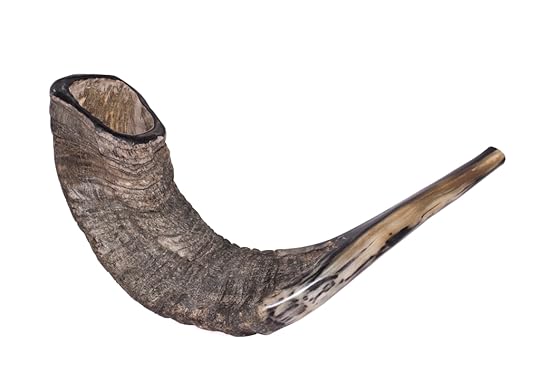 Shofar (Jewish ritual horn) שופר
Shofar (Jewish ritual horn) שופרTimes seem grim in the world in general. The Coronavirus is still on the rampage, and catastrophes, whether man-made or natural, come hot on the heels of one another. Here in Israel, many adults, myself and OH included, have had their third vaccination, and the numbers on a national scale are positive. Forest fires, whether occurring naturally or caused by malign humans, have wreaked untold damage on the beautiful woodland area of the Jerusalem hills, the air is scorching hot for most of the daylight hours, but the threat of another lockdown appears to have been avoided for the moment. The school year started despite everything, and the very diverse government seems to be functioning, with ministers getting on with their jobs.
Other matters seem to be moving in a positive direction. In a TV interview, Foreign Minister Yair Lapid admitted to having erred in not attending cabinet meetings devoted to addressing the Coronavirus issue, even going so far as to give the media credit for calling him out on this. He has since attended every such meeting, whether in person or via zoom.
The national budget passed its first parliamentary reading without undue fuss and bother. It includes increases in the allocations for the health and education ministries, enabling the services provided to certain segments of the population to be extended. Admittedly, there are still many areas in which the services provided to the less fortunate could and should be improved, especially housing and welfare, but this still signifies a positive change, both in attitude and in action.
In foreign policy, too, relations with other countries seem to be going in the right direction, with invitations extended to our Foreign Minister by the Arab Emirates as well as Morocco, Egypt and the U.S.A. On the other hand, our relations with Poland have taken a turn for the worse since that country ratified a law to deny the right of Jews who lost property during and after WWII to sue for compensation. I’m curious to see how that will evolve, though I personally regard the Polish government’s threat to ‘retaliate’ for whatever steps Israel might take by preventing organised groups of Jewish youngsters from visiting concentration camps as a blessing rather than a punishment. There is no need to put more money in the pockets of the people who have taken so much from us. A visit to Yad Vashem, or better still, a course of visits there, can have just as salutary an effect, and would avoid the shameful behaviour occasionally displayed by some of our youngsters on those trips.
But above all, life goes on. Families frolic and camp at the seaside and on the shores of Lake Kinneret, and also visit the many beautiful nature reserves and interesting sites in which Israel abounds. The beaches, playgrounds and funfairs are full of youngsters enjoying the last days of summer. Several museums, e.g., the Bible Lands Museum and the Museum of Islamic Culture, both in Jerusalem, are holding particularly attractive exhibitions (birds in the Ancient Near East in the former, the History of Coffee in the latter). Nobody knows how long all this will continue and we can still mix almost freely with one another (wearing masks and keeping our distance), so everyone’s doing their best to benefit from the current situation while they can.
The High Holydays occupy our time and attention during September, existential threats are still with us, dissenting voices are still being heard and security issues continue to be of concern. But at least for the moment we are not being constantly bombarded by the threat of another national election.
September 3, 2021
Leisure and Pleasure
Leisure and Pleasure
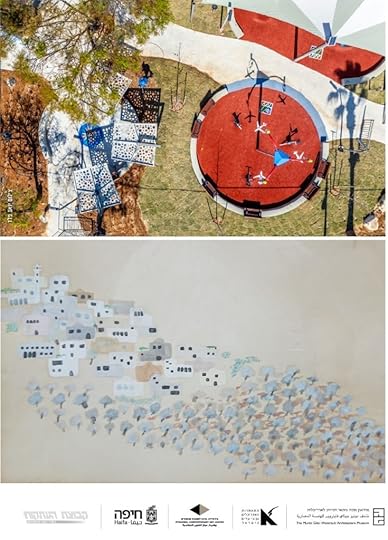
Tucked away behind a row of buildings on one of Haifa’s main boulevards is the Munio Gitai Weinraub Architecture Museum. Its rather sombre space provides a home for changing exhibitions demonstrating different aspects of the built and open areas in which human life takes place.
Erez Raz, who studied Landscape Architecture at the Haifa Technion, has assembled some of the projects he has worked on in recent years, presenting them in an exhibition displaying his varied talents and original approach to combining interior and exterior in public life. The projects presented depict his approach to different stages of urban life, ranging from childhood play through adolescence and sport to adult activities such as shopping and driving.
Emphasizing the importance of open spaces and being in touch with nature for human welfare, he shows how he has tackled such projects as designing a new shopping mall, planning a science park, and organizing various other projects in such a way that consideration of the environment and contact with nature is not omitted from the urban landscape.
The large wall posters show these projects as meeting basic human needs, as defined by psychoanalyst Donald Winnicot, who stated that the individual’s mental environment is a kind of ‘half-way house’ between reality and imagination, enabling him or her to connect with their objective surroundings, and that the subjective connection with the natural world facilitates this.
It requires a great deal of imagination, resourcefulness and originality to turn a mundane shopping mall into a place of harmony where a commonplace activity such as shopping becomes a pleasant aesthetic experience and the individual feels uplifted by coming into contact with nature. Erez Raz seems to have achieved this in the recently constructed Village Open Shopping Precinct at an important junction where Givat Olga (near Hadera) abuts one of the main road and rail routes along Israel’s coast line. A dedicated cycle route has been incorporated into the layout of the precinct, and rest areas as well as a special area with activities for children have been incorporated into the design, thus catering for all segments of the family.
Even something as simple as a neighbourhood basket-ball court presents a design challenge, and Erez Raz has managed to incorporate design elements into this seemingly simple task, using materials that blend in with the environment. At the same time he has managed to create a unique space that defines the activity for which it is intended and is also defined by it, bearing in mind the proximity of the site to both the sea and the Carmel mountains.
The motto of the exhibition ‘Leisure and Pleasure’ reflects the underlying philosophy of the designer, namely, the importance of leisure activities for the mental well-being of the individual and society as a whole, and the need to incorporate aspects of the natural world in the urban environment.
For the record: Erez is my nephew, and I think I am justifiably proud of him.
August 26, 2021
Games We Played
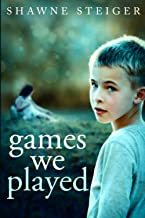
This well-written book by Shawn Steiger is about people, specifically the two main characters, who have psychological and sexual hangups and issues which complicate their lives, as well as those of the people around them. The chapters are written from the viewpoints of the two main characters, Rachel, now an actress in the New York area, and Stephen, a rather mixed-up young man and military drop-out, living in California. As children Rachel and Stephen lived near one another and played together, though their games sometimes involved some kind of sexual element. In addition, Stephen had been indoctrinated with neo-Nazi ideology by his grandfather, with whom Stephen and his mother lived, and this penetrated their childhood games. Rachel had what was seemingly a normal family, with a psychiatrist father and home-maker mother.
At the beginning of the book Rachel’s paternal grandmother and Holocaust survivor, Gladys, moves in with the family. Her first action is to impose the regime of an observant Jewish life on the other members of the family, involving making the kitchen kosher, attending synagogue, and teaching Rachel Hebrew. The graphic account of the almost brutal way this was done leaves the reader reeling, and casts a shadow over the subsequent life of the family.
Without giving away too much of the story, suffice it to say that the charaters’ lives follow a trajectory that at first drives them apart and later brings them together, as the time-line switches almost at random between their childhood and the games they played, and their adult lives with all the tensions and emotions of adult relationships with friends and lovers.
The author paints an authentic picture of the people and places in which the story is set (New York and California), and the reader gradually uncovers more and more of the background to the development of each of the individuals portrayed. Things (and people) are not what one assumes them to be, and the twists and turns in the narrative leave us wondering what is true and what is fabrication in their backgrounds. The addition of the neo-Nazi element in contemporary American society provides further authenticity to the story as it unfolds, creating a threatening atmosphere that rings true.
I enjoyed reading this book for its psychological insights into what were new worlds for me, as well as its telling portrayal of the internal conflicts and battles of the main characters. Anyone interested in contemporary American culture should read it.
August 19, 2021
Old Orleans
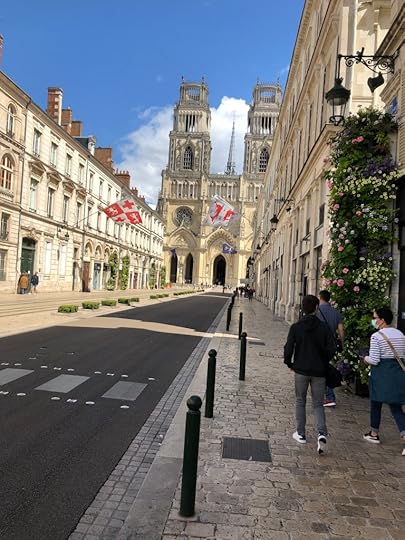
Just over a week ago, while en route to Paris on our way home to Israel, we stopped to take a brief look at the famous city of Orleans, one of France’s foremost historical sites, and associated indelibly with Joan of Arc, a.k.a. the Maid of Orleans.
Because of its location on one of the northern-most bends of the River Loire, the city was always an important trading port. After the city was destroyed by Julius Caesar, the Roman emperor Aurelian rebuilt it, naming it after himself, and this became ‘Orleans’ in the local dialect.
During the Hundred Years waged between France and England in the fifteenth century, a young peasant girl, Joan of Arc, born in north-eastern France to simple peasants, claimed to have heard a divine message telling her that she had been chosen save France and install the heir to the throne, the Dauphin Charles, to his rightful position at the head of the monarchy.
She managed to convince Charles that she was divinely inspired and protected and, with his support, led troops into battle against the English who were entrenched in Orleans. With her at their head, the French fighting force defeated the English and raised the siege of Orleans. She also managed to have Charles crowned king of France at Rheims in 1429. However, her enemies at court persuaded the king, now Charles VII, to abandon her, and she fell into the hands of the English enemy, who tried her as a witch, accusing her of heresy for having cut her hair short and donned men’s clothes.
After being imprisoned for a year, she was burned at the stake, but her fame continued to grow and her memory to be revered, until in 1909 she was beatified in Notre Dame cathedral.
We visited the city’s Cathedral of the Holy Cross, so called because it purports to have pieces of the original cross given to it by Saint Helena, the mother of Emperor Constantine, the first emperor to accept Christianity. The imposing neo-gothic building has been built and rebuilt several times in the thousand-plus years of its existence, and among its most impressive features are the stained-glass windows depicting the life of Joan of Arc. The young volunteer guide who escorted us helped us to perceive the various scenes in the saint’s life, and their nineteenth-century artist has managed to provide a highly imaginative and graphic account of Joan’s tumultuous and extraordinary life.
The city is also home to one of Europe’s oldest universities, and hosted the religious reformer John Calvin in the sixteenth century. The English king, Henry VIII, made use of Calvin’s teachings in his struggle with the Pope in pursuit of a divorce. As a mark of his gratitude he donated money to the university.
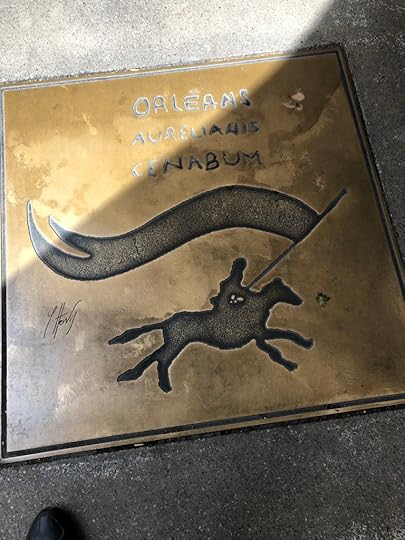
The centrsl part of the town comprises spotless broad streets, its paving stones occasionally interspersed with copper plaques bearing the town’s emblem, which depicts Joan of Arc on horseback, flying a banner. Her own banner, which went everywhere with her, bore the words ‘Jesus, Maria,’ but the Latin words on the copper plaques are the name given to it by the Roman emperor: Aurelius Cenabum (City of Aurelius).
August 12, 2021
Brave or Foolish?
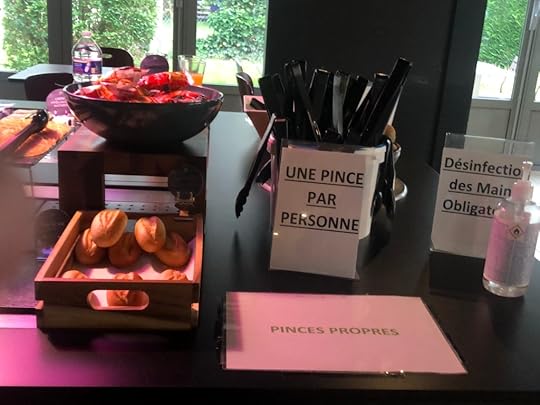
“You’re very brave to travel abroad in these times,” we were told by various friends and acquaintances, both at home and abroad, when referring to our recent trip to France. The underlying message was that we were being foolish to risk our health by boarding a plane and going to the area in central France where we have spent our summers for the last few years, but had to miss it last year.
During those visits we have learned to love the easygoing way of life there, the beautiful countryside and the friends we have acquired. It goes without saying that we have also enjoyed the restaurants and the interaction with the local population, enabling us to exercise – and hopefully improve – our command of the French language.
Admittedly, the bureaucratic and medical requirements associated with travelling these days were a heavy burden. In addition to filling out complicated forms before each flight, we had to be tested for the Coronavirus as well as taking out health insurance which, because of our advanced age, has become very expensive.
Nonetheless, we were not daunted, and although the weather in France was mostly cold and occasionally even rainy, we considered the money well-spent. It seemed strange to have to wear sweaters in July, and even sit ensconced in a blanket when inside, but it was no worse, and perhaps even better, than enduring the sweltering heat that prevailed in Israel just then.
Getting away from our usual routine, however enjoyable, turned out to be good for us. We both managed to read books at a rate we cannot aspire to in Israel, to enjoy one another’s company without having to compete with all the other demands on our partner’s attention, and to ‘wind down’ in a way that is simply impossible for us while in Israel.
Driving along a country road is a pleasure in itself, and the courtesy and consideration displayed by drivers is unbeatable. Even on the motorways drivers hardly ever cut in on one another or engage in tailgating – behaviour that is almost the norm in Israel. Hand-sanitising gel is to be found at the entrance to every shop, restaurant, business or café, and there are constant reminders to keep distance from others.
Our last couple of days were spent en route for Paris. We stayed overnight in the town of Orleans and managed to visit its impressive cathedral with stunning stained-glass windows portraying the events involving Joan of Arc. Stricter regulations to prevent the spread of Corona had just been introduced in France, and so we were required to present our ‘Green Passport,’ before we could enter the breakfast area of the hotel. Before touring the buffet there each guest was required to take a pair of large black plastic tongs (pince) with which to take food (see photo). I wonder if anything like that is being tried by any Israeli hotel.
Going through the airports at either end was more complicated and demanding than in the past, and the cramped conditions on the plane were no great pleasure. But despite all this, it was worth it. We’re happy to be home, in the bosom of our family and friends once more, but we’re not sorry we made the effort. I don’t know how long we’ll continue to feel the psychological benefit, but I’m enjoying it while I can.
August 4, 2021
What Price Global Warming?
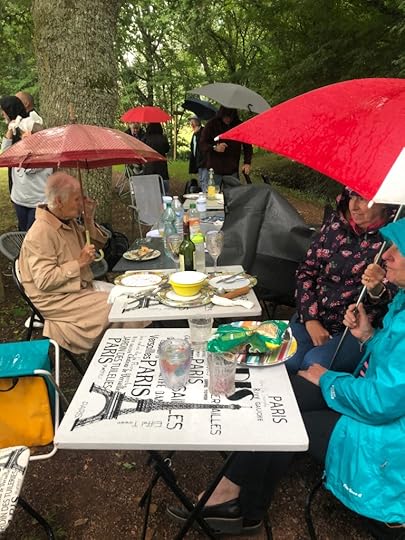
‘Where has the summer gone?’ people all over central France, where we have been spending the last few weeks, keep asking. Many of those people, like my OH and myself, have come to this part of the world to get away from the dreary climate in other parts of the world (e.g., the U.K.) or, as in our case, from the stifling summer heat of Israel. Day after day the sky has been cloudy and grey, the rain has fallen, either as drizzle or in sudden showers, and the temperature has dropped to the extent that I often sit inside wrapped in a warm blanket to stave off the cold.
To make matters worse, the traditional ‘Polyglot Picnic,’ organised by a friend in order to bring French and English-speaking residents of the area together, was forced to come to a sudden end when a (predicted) downpour arrived. Since most of the participants were originally from the U.K. (I won’t say England, as some were from Wales and might take offence) and not unused to this kind of weather, we were wearing warm clothes and stout shoes, and were all equipped with umbrellas. As the picture shows, the brollies came out when the rain began. We tried to stay at our posts, but the weather soon became too much, even for us hardy souls, and a hasty — and slightly muddy — retreat was beaten. Still, the company was great, and we enjoyed meeting up with our friends. Those of us who were visiting from abroad shared tales of the intrepid endeavours we had to endure in order to get to our destination.
Meanwhile, other parts of the world suffer floods and fires, and the dreaded Covid 19 is on the rampage again, though that does not necessarily have anything to do with global warming. I have experienced heat waves in Israel before, but this year’s seems to be longer than those the past. Forest fires, too, are nothing new, but possibly their extent and ferocity has also been greater than in the past. I’ve been told that I had to be taken out of the film ‘Bambi’ as a child because I was screaming in terror at the sight of the forest fire and the devastation it caused. Not that that really proves anything.
But all in all or time in France has been very enjoyable. We have managed to take walks in the beautiful countryside, meet old and new friends, visit and eat at our favourite restaurants and generally enjoy the peaceful atmosphere. Probably the fact that we do not watch TV while we’re away from our home in Israel contributes to our relaxed mood, though we do keep in touch with events there through the internet, and of course there’s always the family WhatsApp.
One of our last outings was to go with friends to a nearby restaurant with a stunning view and an admirable menu (and excellent service). Imagine my surprise when one of our party whipped out his cell-phone, took a photo of the bottle of wine we had ordered to accompany the meal, then checked it on an app on his phone that gave grades, prices and other details about wines. So now we know that in addition to having chosen a recommended wine we also paid well over the shelf price for it. But that is the way of restaurants all over the world, isn’t it? And what with all the ‘amuse bouches’ and extras accompanying the dessert, we certainly didn’t come away hungry. And that’s another (though not unique) feature of life in this part of France — the generosity and kindness of the people.
July 29, 2021
The Age of Exodus
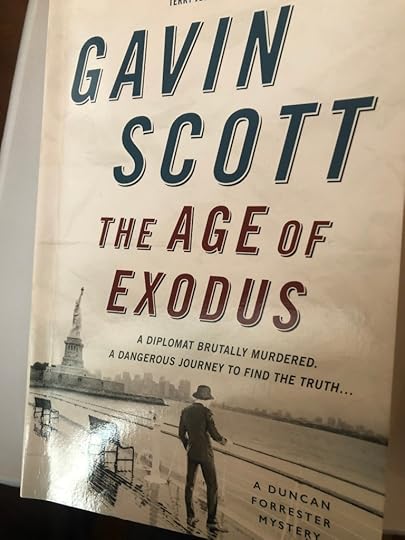
Although not a fan of thrillers or adventure literature, I was tempted to buy this book by Gavin Scott because its subject-matter combined ancient archaeology and the struggle to establish the modern State of Israel. An irresistible combination for me.
The year is 1947 and Dr. Duncan Forrester, Fellow in Archaeology at Oxford university, has returned to civilian life after participating in the pre-D-Day action aimed at eliminating senior German officers on European soil. Prior to that he had been assigned to training young Jewish men in what was then British-Mandated Palestine when it was feared that Rommel would be victorious and manage to conquer the entire Middle East.
A colleague asks him to advise a friend at the Foreign Office who possesses an ancient object, which turns out to be a Sumerian cylinder seal found in an excavation in the area now known as Iraq but formerly part of the Ottoman Empire. The plot thickens when the friend is subsequently found murdered in the area reserved for artifacts from the Ancient Near East in the British Museum.
Forrester is then asked to help protect the British Foreign Minister, Ernest Bevin, in New York, from a possible assassination attempt by members of the far-right Jewish resistance to British rule in Palestine. Negotiations are under way regarding the future of Palestine and British rule there, with Bevin and the Foreign Office fiercely opposed to the creation of a Jewish State and in favour of the Arab cause. Attaining access to the oil that is controlled by the Arabs is behind the British stance, as well as a firm streak of anti-Semitism.
Attempts are made on Forrester’s life durimg the crossing by liner and while he is in New York. The effigy of a Sumerian idol is stolen, and after being attacked again Forrester escapes on to a ship anchored in the harbor. Using his extensive nautical knowledge, Forrester helps to save the ship from sinking,and get to its destination in southern France. There he is taken to a building holding Jewish refugees seeking to get to Palestine in the framework of the illegal immigration known as Aliya Bet. Shocked by what he has seen and heard, Forrester’s sympathies shift to the Jewish side, and he does what he can to further their ambitions.
The mysterious murders of British diplomats, the uses and abuses of archaeological artifacts, and the struggle for the Jewish State are all tied together neatly, bringing the book to a satisfactory conclusion. History has proved that Forrester’s instincts were right and the views and interference of the British establishment wrong, despite the suffering that has been caused along the way.

